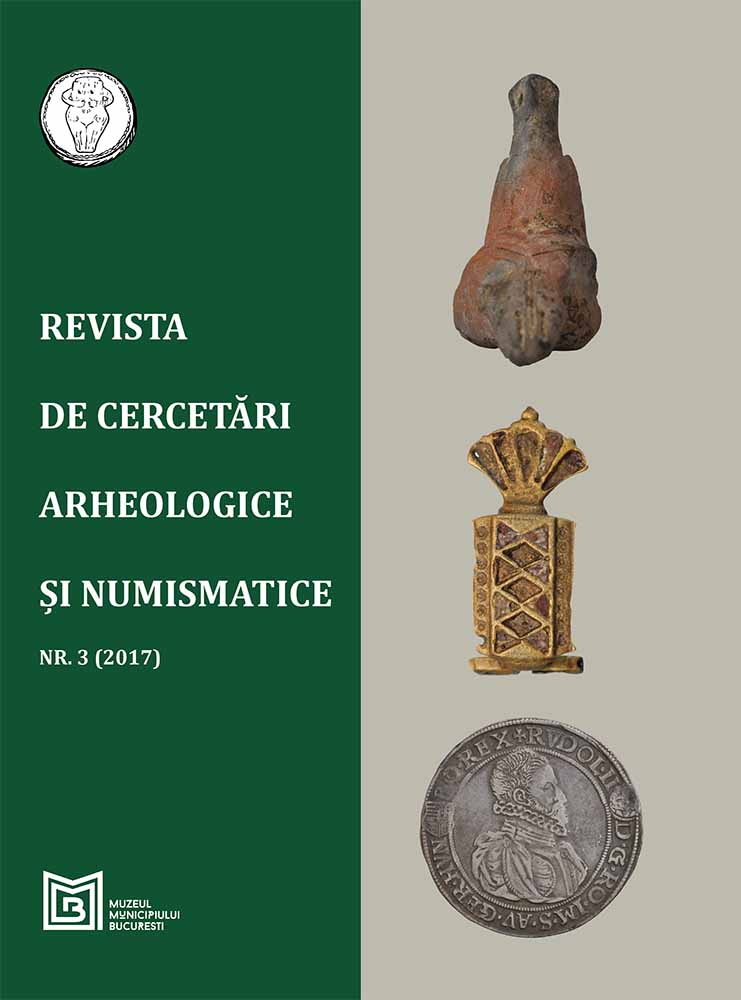DOUĂ TETRADRAHME DE TIP ALEXANDRU CEL MARE DESCOPERITE LA JEGĂLIA,JUD. CĂLĂRAŞI
TWO ALEXANDER THE GREAT TYPE TETRADRACHMS DISCOVERED AT JEGĂLIA, CĂLĂRAŞI COUNTY
Author(s): Emanuel PetacSubject(s): Archaeology, Economic history
Published by: Editura Muzeului Municipiului Bucuresti
Keywords: Alexander the Great; tetradrachm; Jegălia;
Summary/Abstract: Two posthumous Alexander the Great type tetradrachms were found in 1975 somewhere in Jegălia, Călăraşi county. They are two very poorly preserved coins - one of them seems to be a Macedonian issue struck before 294 BC (no. 1), while the other one (no. 2) came from Amphipolis, years 281/280-271/270 BC. Because we did not fiind any dies-link between these tetradrachms and those from the standard catalogue of M. Price or in any other hoard, we cannot exclude the possibility that they are Alexander type imitations, especially no. 2, emulating the issues from Amphipolis, as suggested by the crossed legs of Zeus and the style of the obverse. The discoveries of Alexander type tetradrachms in Romania are not very numerous, however, they are significant. We have the hoards from Rasa, Călăraşi county; Vedea, Giurgiu county; Hinova, Mehedinţi county; Bătăşani, Vâlcea county; all of them also including a few Seleucid coins offering a more circumstantiated chronology, toward 270-260 BC. This outlines a horizon of discoveries probably linked with the movement of the Tribalii to the East, under the heavy pressure of the Celtic tribes, or even with their entry into the North-Danubian Getian territory. All these discoveries also reflect the proliferation of the Philip II type imitations, but also of the Alexander the Great type, as we see especially in the hoard from Ogoya, Bulgaria.
Journal: Revista de Cercetari Arheologice si Numismatice
- Issue Year: 3/2017
- Issue No: 3
- Page Range: 317-322
- Page Count: 6
- Language: Romanian

